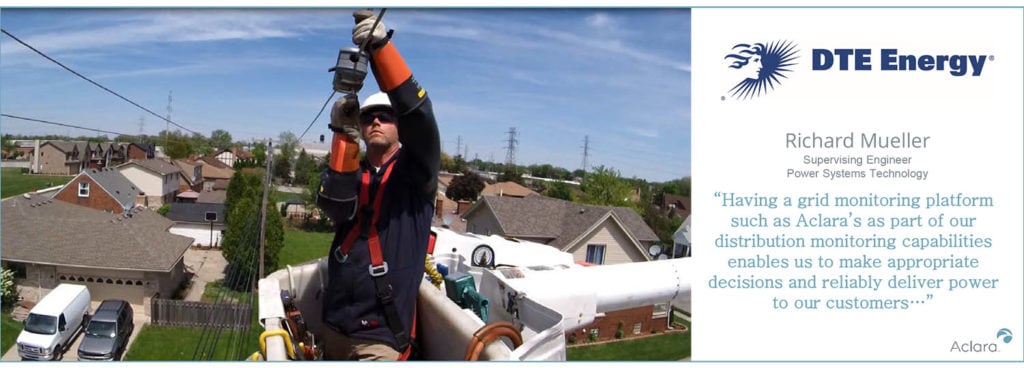This blog is the second installment in our 4-part series on why the Aclara Grid Monitoring Platform is a better investment than fault current indicators (FCIs, or FPIs as they are known in Europe). In Part 1, we noted that Aclara smart grid sensors are more accurate than FCIs due o the four levels of analytical processing available in our sensor management system (SMS) software with Predictive Grid® analytics.
In this post, we will focus on the second reason why utilities should choose sensors: the Aclara Grid Monitoring Platform is the only solution offering Predictive Grid analytics.
Predictive grid analytics offers real-time information
Predictive Grid analytics software is revolutionary as it monitors the distribution network to give utilities real-time information to predict outages and failures of assets before they occur. FCIs do not predict outages and therefore cannot effectively reduce the number of outage minutes.

Aclara is changing the way utility companies deal with power outages with our Predictive Grid analytics. With the Predictive Grid analytics, utilities can use real-time data from the distribution grid to proactively troubleshoot future failures by looking for the precursors of problems before they cause an outage. For example, smart grid sensors can identify substations that are overloaded or a section of the grid that is experiencing frequent momentaries or line disturbances, all of which can be tell-tale signs of outages.
Why you need Predictive Grid analytics
The Aclara Grid Monitoring Platform with smart grid sensors is the only solution to classify line disturbances, which are fault events that do not trip any protective devices. An example would be a 4,000-ampere fault that was only on the line for 3 cycles before it burned clear. The substation circuit breaker relay or recloser might detect the fault, but the time-over-current curves in the relay would not time-out to initiate a trip. Typically, the utility would be completely blind to such events — even if they had SCADA.
For example, the Northeast blackout of 2003 was caused by a tree hitting a power line and creating a cascading series of outages. During this blackout, Daimler Chrysler lost production at 14 of its 31 plants and had to scrap 10,000 vehicles. By monitoring and detecting these events, utilities can take preventative outages to stop outages – and significantly impact the cost outages have on businesses and households.
Once these events are classified, the rules-based engine in the SMS can categorize even more specific events as faults. These include a blown fuse on a lateral circuit, an adjacent-phase fault, a downstream trunk fault, or fault current because of a capacitor-bank switching or load-switching operations. This capability gives you visibility into events beyond just faults that cause an outage.
Second, all data is available to analyze trends and evaluate the cause and effect around faults to build actionable intelligence and accurate alerts. This allows for proactive troubleshooting new grid conditions before they cause outages.
This visibility into grid conditions allows utilities to send out crews to investigate and correct problems before they lead to an outage. This means crews can make repairs during normal business hours and when situations are most ideal, for example during daylight and not during a storm.
By getting ahead of these problems, utilities can take planned, corrective action that saves time and money by eliminating failures before they occur. Receiving real-time information remotely allows utilities to avoid outages, respond to outages faster and eliminate thousands of miles of truck rolls (and greenhouse gases).
How DTE Energy benefits

DTE Energy is a great example of a utility deploying Aclara smart grid sensors to reduce outages in Detroit, Mi. In June, Aclara and DTE Energy are targeting to reduce nearly 500,000 customer outage minutes over the next three years in the DTE Energy service territory where Aclara Grid Monitoring Platform system is deployed. By detecting the precursors of outages such as line-disturbance events and momentaries, DTE Energy can resolve or avoid problems on its distribution networks.
Aclara and DTE Energy are paving the way for other utilities to take proactive measures to prevent outages. Download case study to learn more.
Stayed tuned for Part 3 of our blog series, where we will discuss the multiple applications of sensors contrasted with the single application of FCIs. Make sure you subscribe to our blog to receive an email alert when Part 3 is available!
To learn more about how Aclara’s MV Smart Grid Sensors could help you prevent outages, download our Predictive Grid whitepaper.
OR
Read part 3 of our blog here

